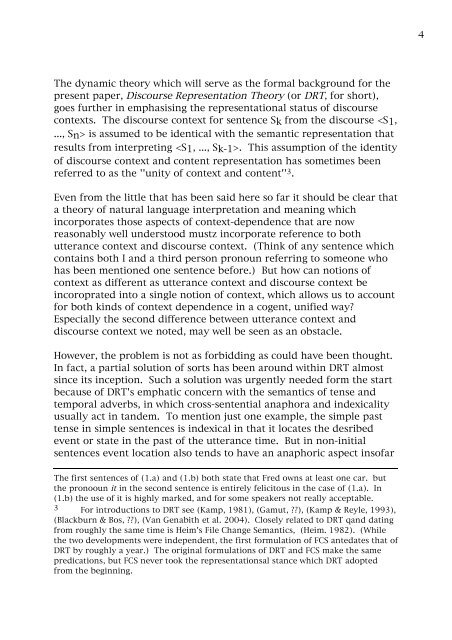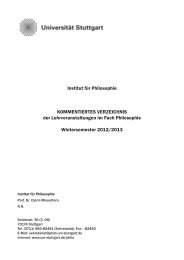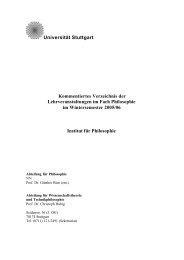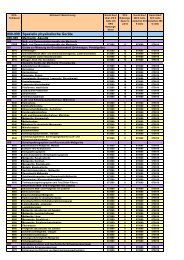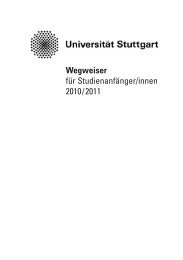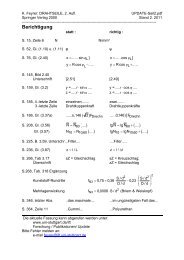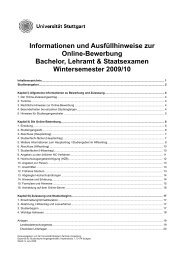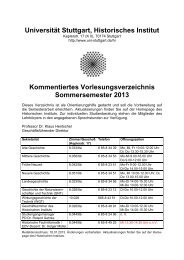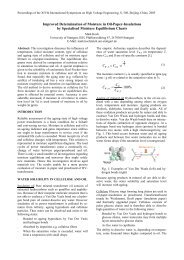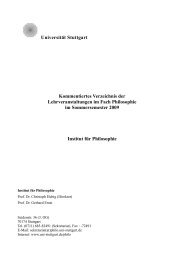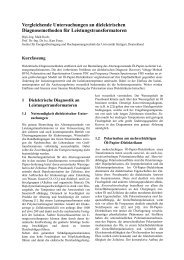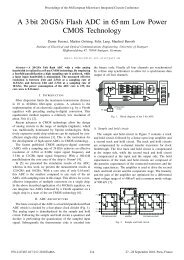Discourse Structure and the Structure of Context - Multiple Choices
Discourse Structure and the Structure of Context - Multiple Choices
Discourse Structure and the Structure of Context - Multiple Choices
You also want an ePaper? Increase the reach of your titles
YUMPU automatically turns print PDFs into web optimized ePapers that Google loves.
4<br />
The dynamic <strong>the</strong>ory which will serve as <strong>the</strong> formal background for <strong>the</strong><br />
present paper, <strong>Discourse</strong> Representation Theory (or DRT, for short),<br />
goes fur<strong>the</strong>r in emphasising <strong>the</strong> representational status <strong>of</strong> discourse<br />
contexts. The discourse context for sentence Sk from <strong>the</strong> discourse is assumed to be identical with <strong>the</strong> semantic representation that<br />
results from interpreting . This assumption <strong>of</strong> <strong>the</strong> identity<br />
<strong>of</strong> discourse context <strong>and</strong> content representation has sometimes been<br />
referred to as <strong>the</strong> ''unity <strong>of</strong> context <strong>and</strong> content'' 3 .<br />
Even from <strong>the</strong> little that has been said here so far it should be clear that<br />
a <strong>the</strong>ory <strong>of</strong> natural language interpretation <strong>and</strong> meaning which<br />
incorporates those aspects <strong>of</strong> context-dependence that are now<br />
reasonably well understood mustz incorporate reference to both<br />
utterance context <strong>and</strong> discourse context. (Think <strong>of</strong> any sentence which<br />
contains both I <strong>and</strong> a third person pronoun referring to someone who<br />
has been mentioned one sentence before.) But how can notions <strong>of</strong><br />
context as different as utterance context <strong>and</strong> discourse context be<br />
incoroprated into a single notion <strong>of</strong> context, which allows us to account<br />
for both kinds <strong>of</strong> context dependence in a cogent, unified way?<br />
Especially <strong>the</strong> second difference between utterance context <strong>and</strong><br />
discourse context we noted, may well be seen as an obstacle.<br />
However, <strong>the</strong> problem is not as forbidding as could have been thought.<br />
In fact, a partial solution <strong>of</strong> sorts has been around within DRT almost<br />
since its inception. Such a solution was urgently needed form <strong>the</strong> start<br />
because <strong>of</strong> DRT's emphatic concern with <strong>the</strong> semantics <strong>of</strong> tense <strong>and</strong><br />
temporal adverbs, in which cross-sentential anaphora <strong>and</strong> indexicality<br />
usually act in t<strong>and</strong>em. To mention just one example, <strong>the</strong> simple past<br />
tense in simple sentences is indexical in that it locates <strong>the</strong> desribed<br />
event or state in <strong>the</strong> past <strong>of</strong> <strong>the</strong> utterance time. But in non-initial<br />
sentences event location also tends to have an anaphoric aspect ins<strong>of</strong>ar<br />
The first sentences <strong>of</strong> (1.a) <strong>and</strong> (1.b) both state that Fred owns at least one car. but<br />
<strong>the</strong> pronooun it in <strong>the</strong> second sentence is entirely felicitous in <strong>the</strong> case <strong>of</strong> (1.a). In<br />
(1.b) <strong>the</strong> use <strong>of</strong> it is highly marked, <strong>and</strong> for some speakers not really acceptable.<br />
3 For introductions to DRT see (Kamp, 1981), (Gamut, ??), (Kamp & Reyle, 1993),<br />
(Blackburn & Bos, ??), (Van Genabith et al. 2004). Closely related to DRT q<strong>and</strong> dating<br />
from roughly <strong>the</strong> same time is Heim's File Change Semantics, (Heim. 1982). (While<br />
<strong>the</strong> two developments were independent, <strong>the</strong> first formulation <strong>of</strong> FCS antedates that <strong>of</strong><br />
DRT by roughly a year.) The original formulations <strong>of</strong> DRT <strong>and</strong> FCS make <strong>the</strong> same<br />
predications, but FCS never took <strong>the</strong> representationsal stance which DRT adopted<br />
from <strong>the</strong> beginning.


